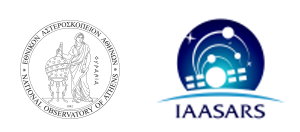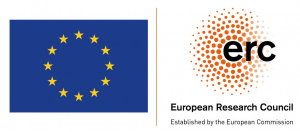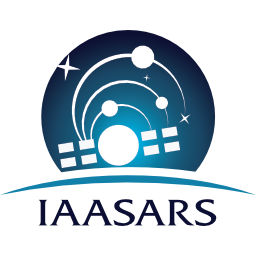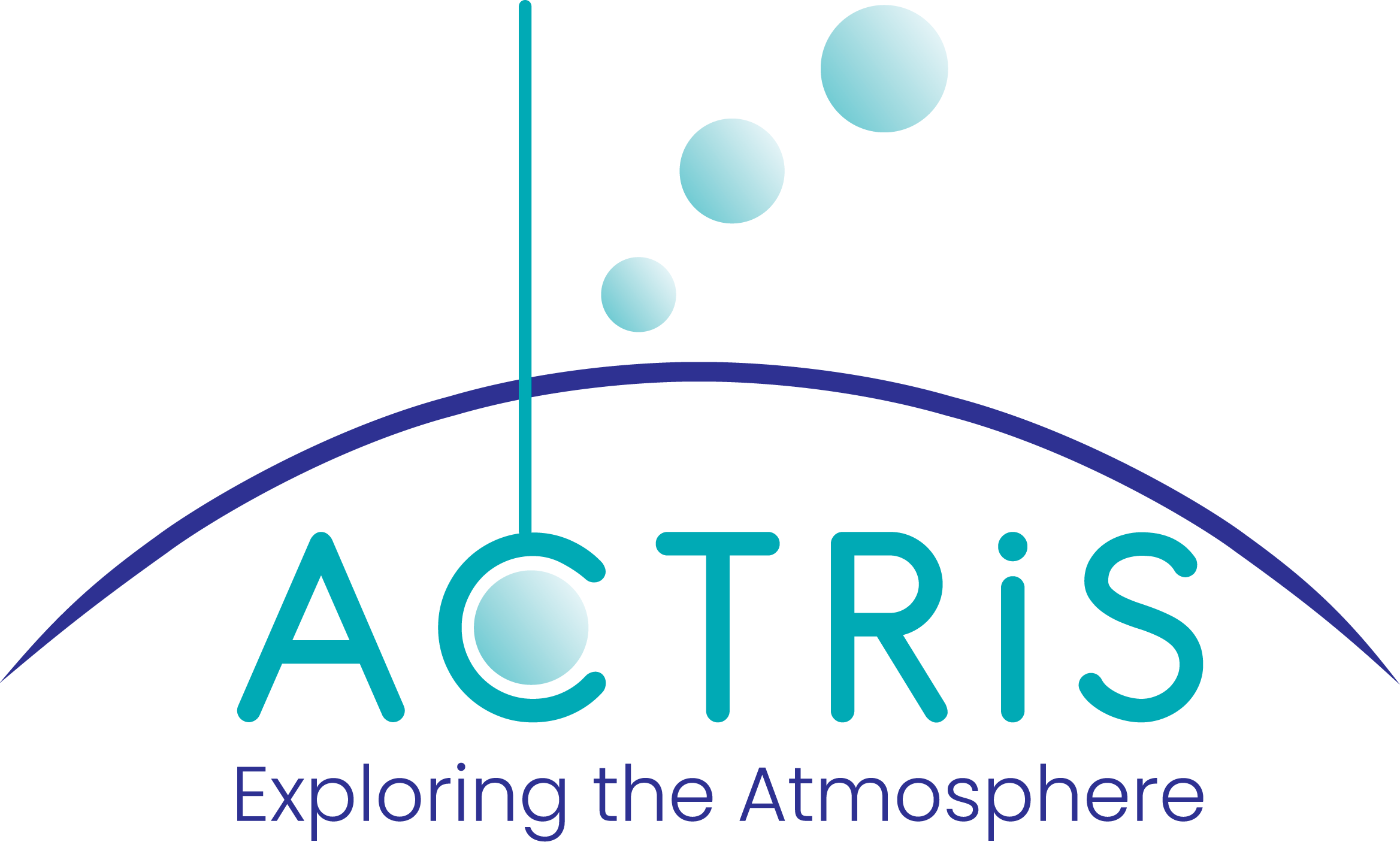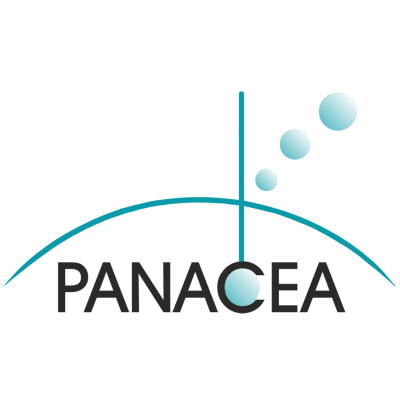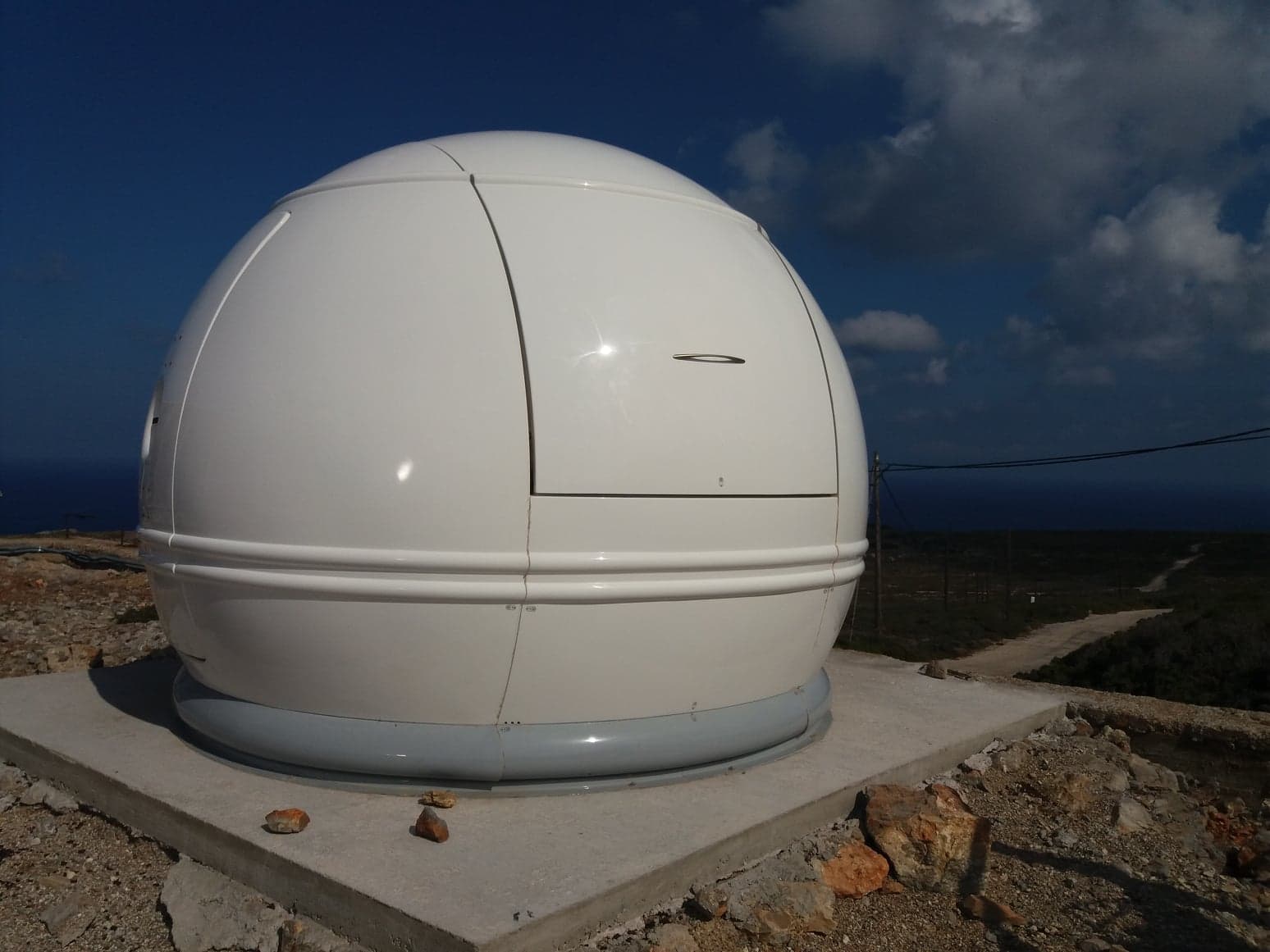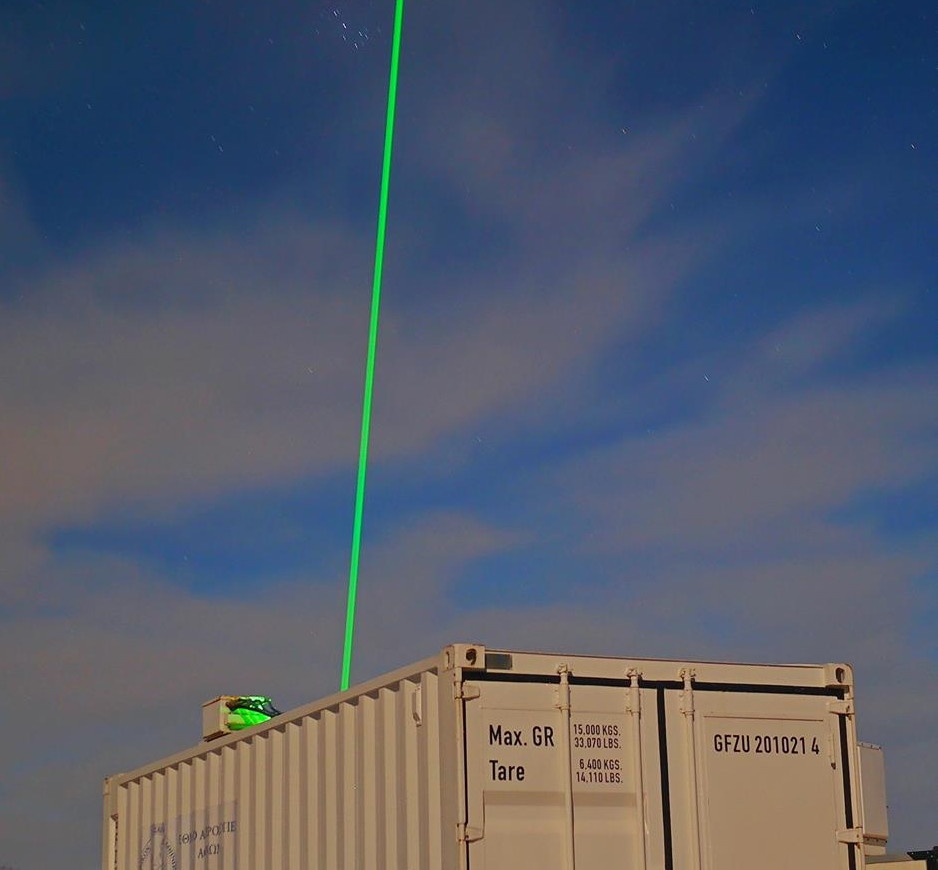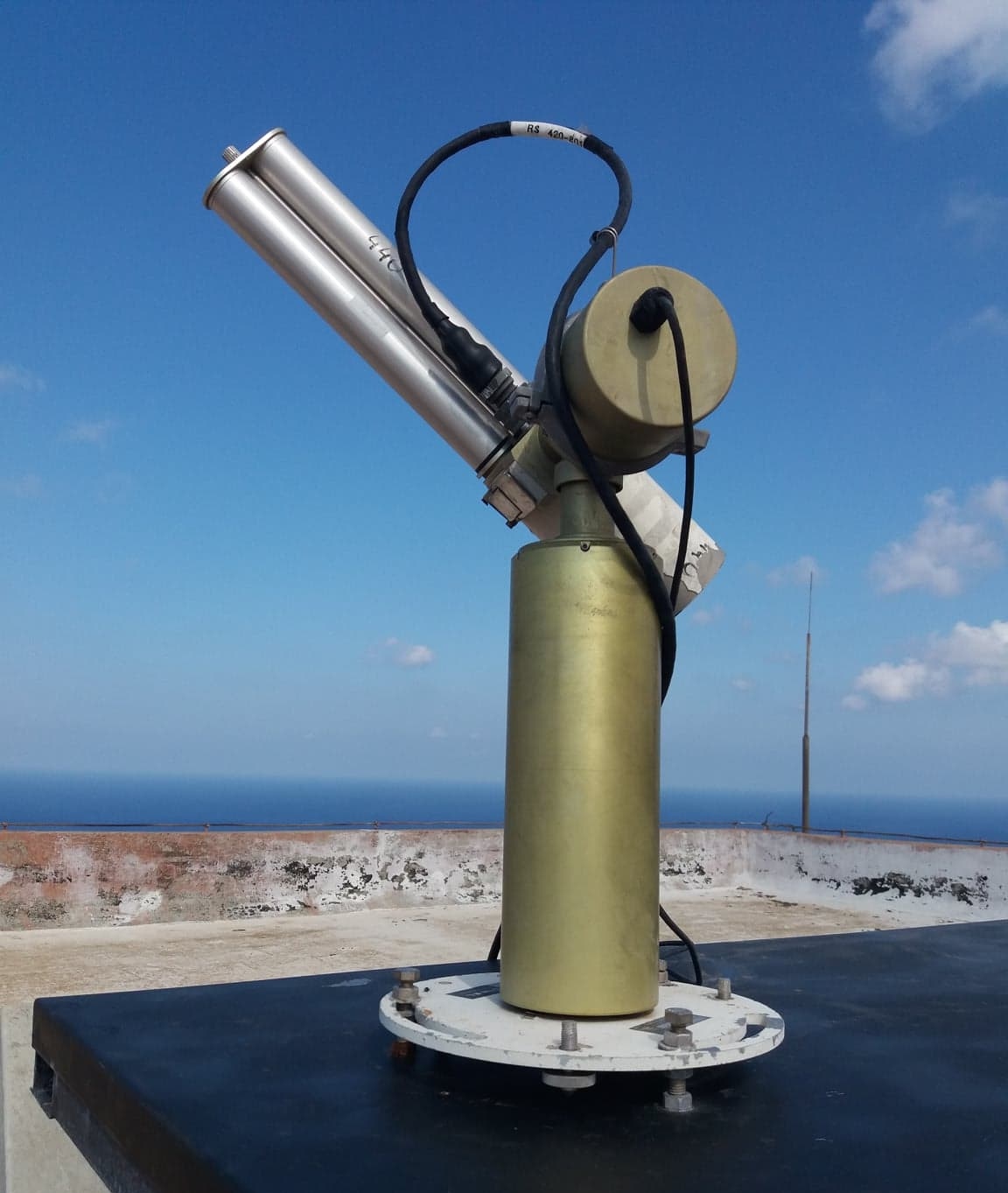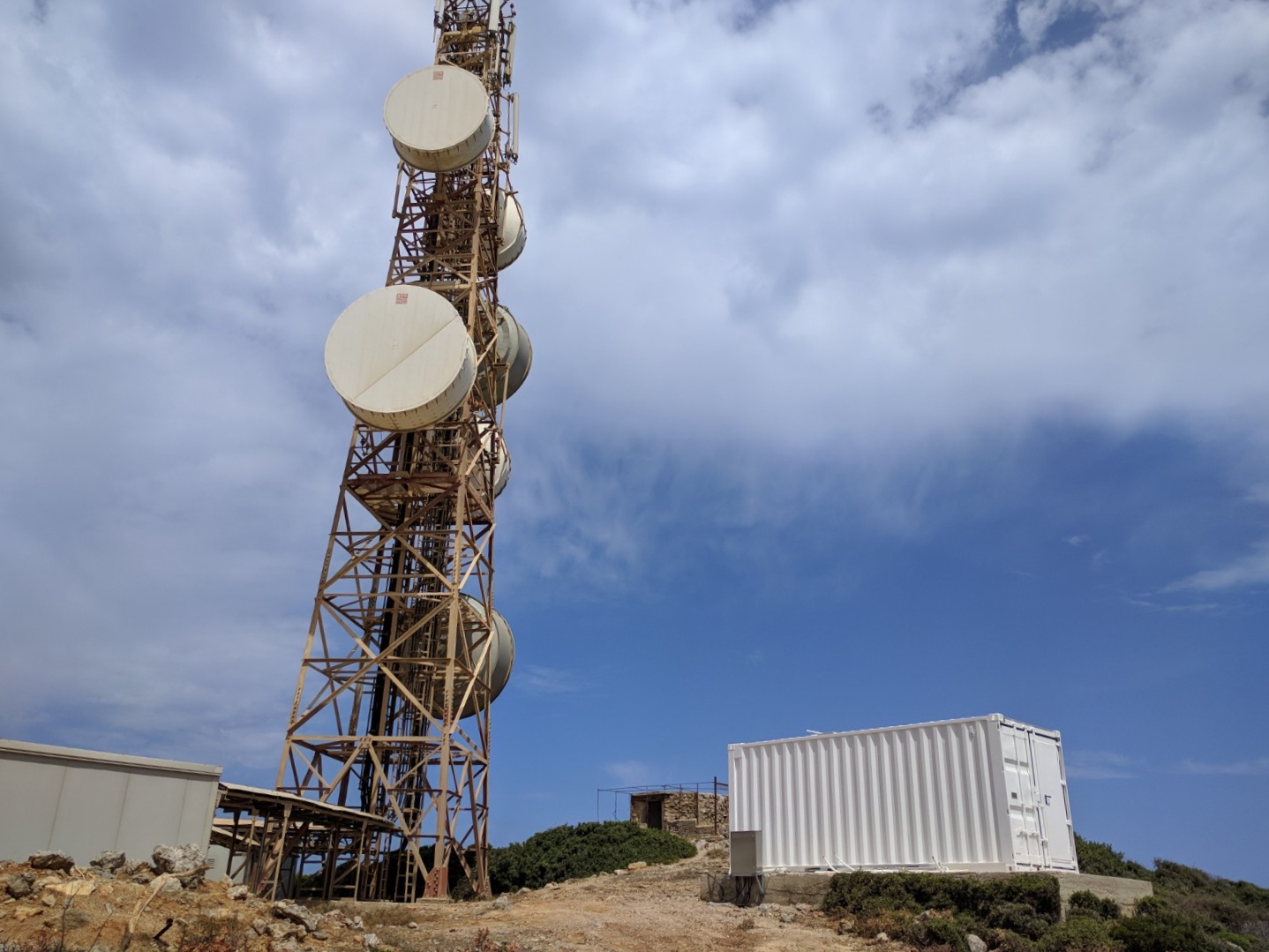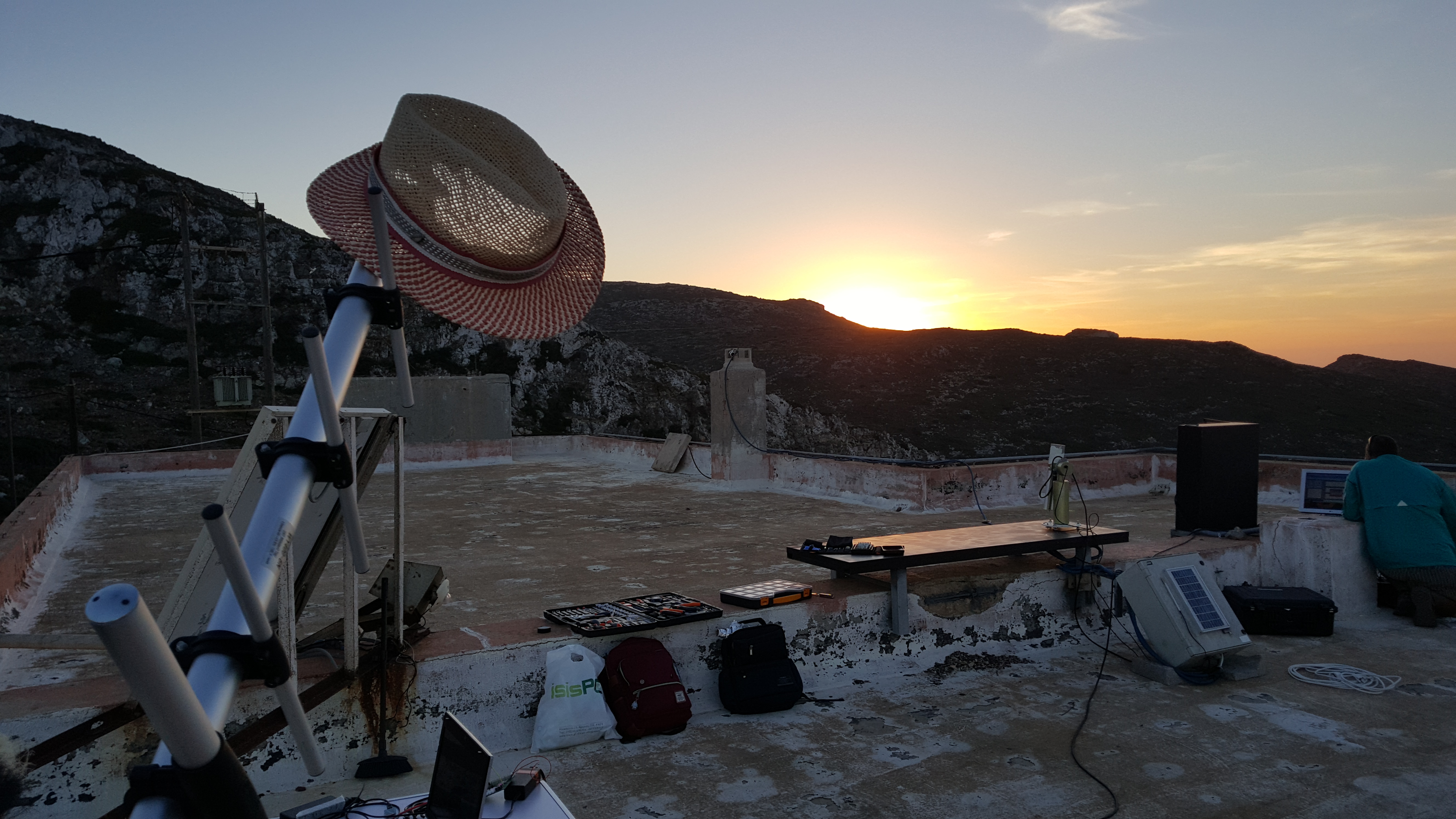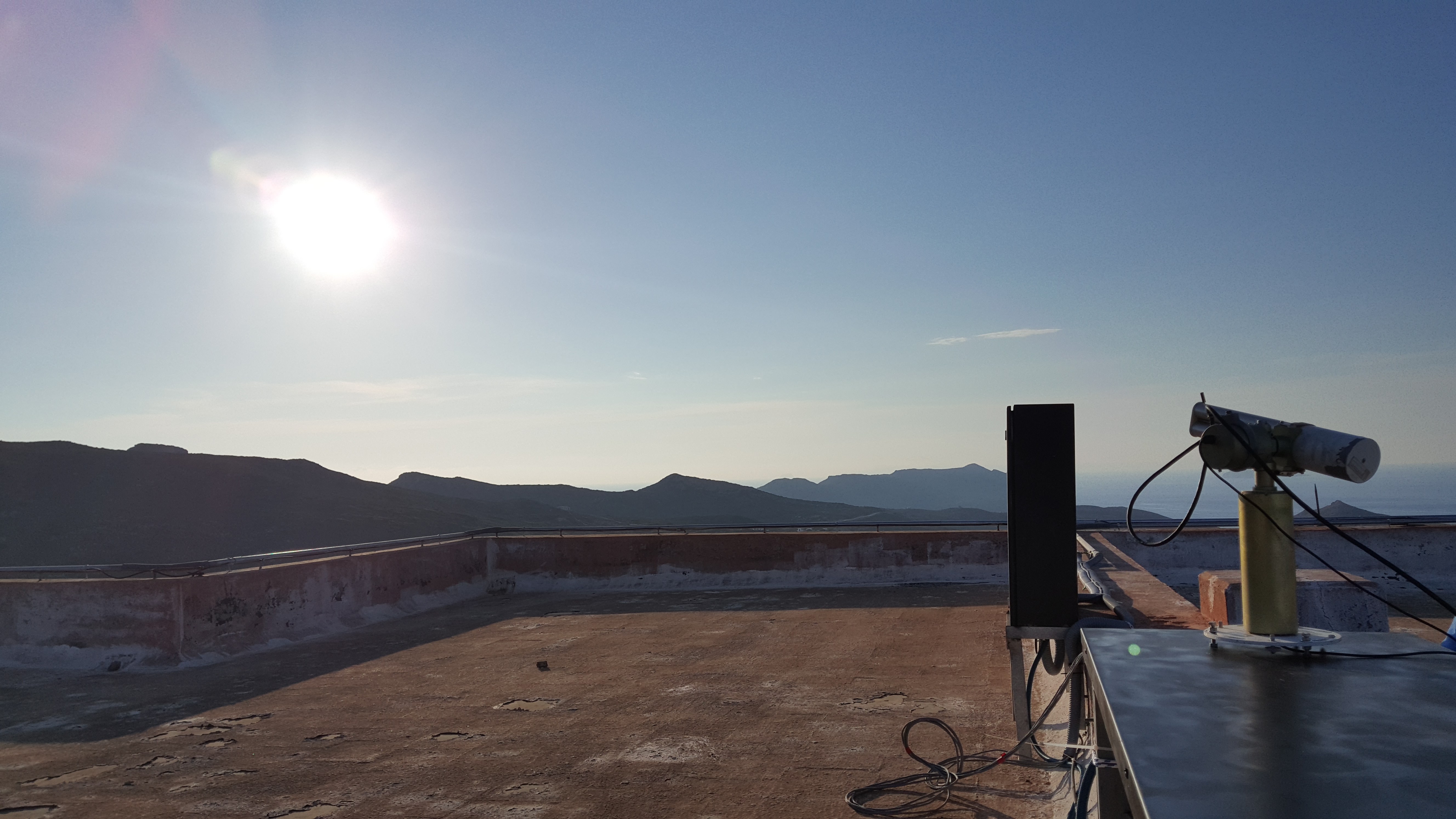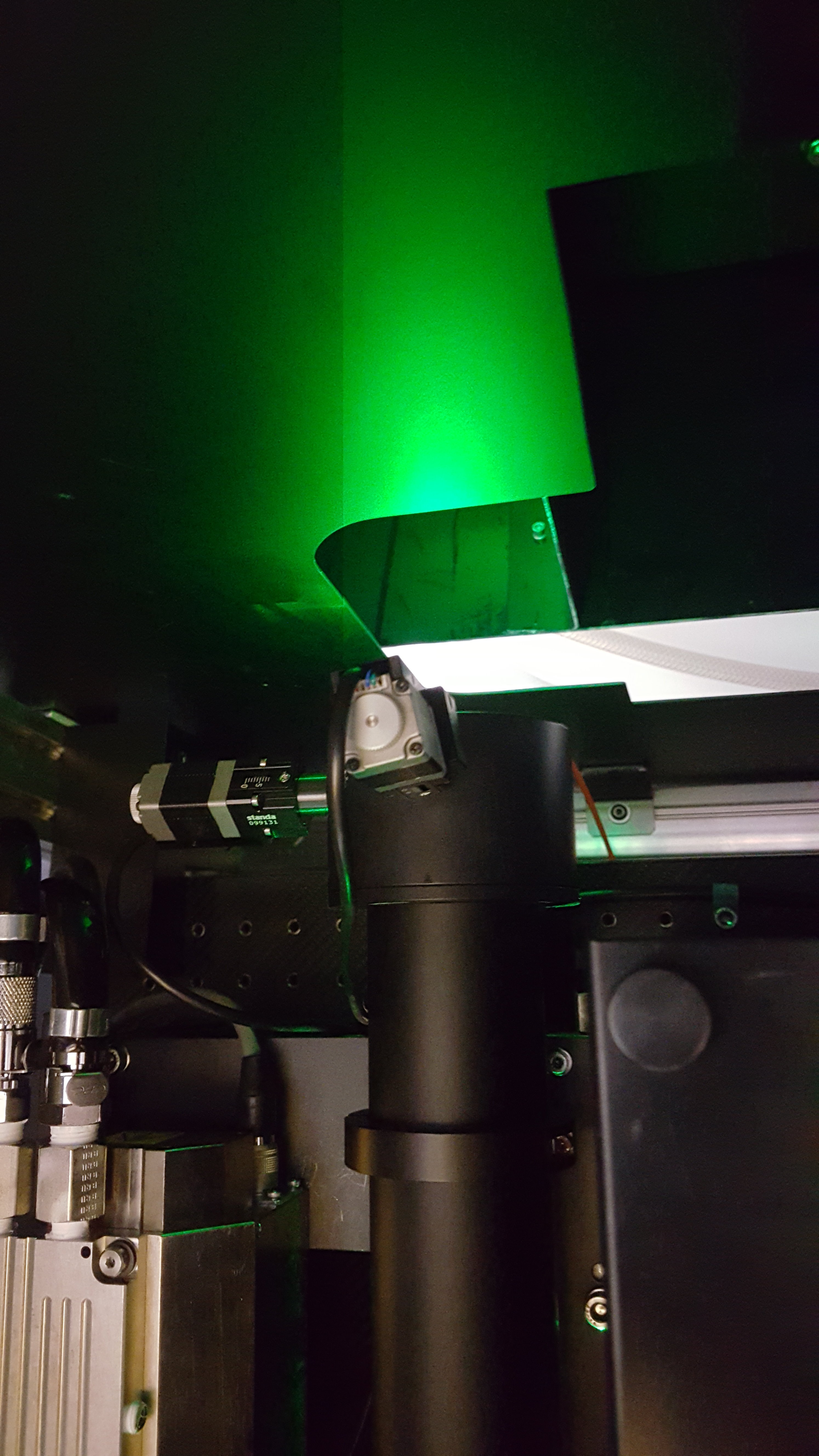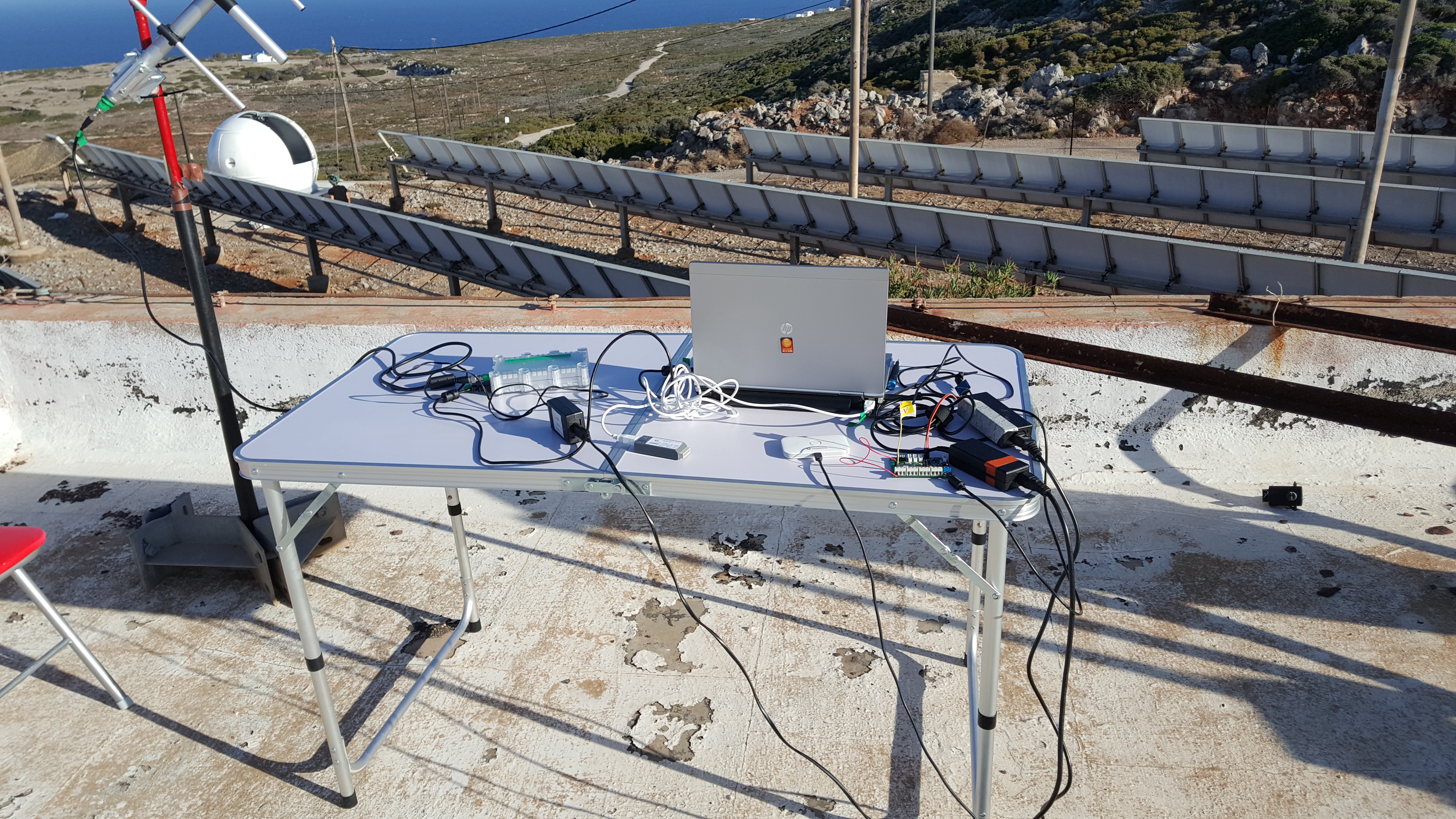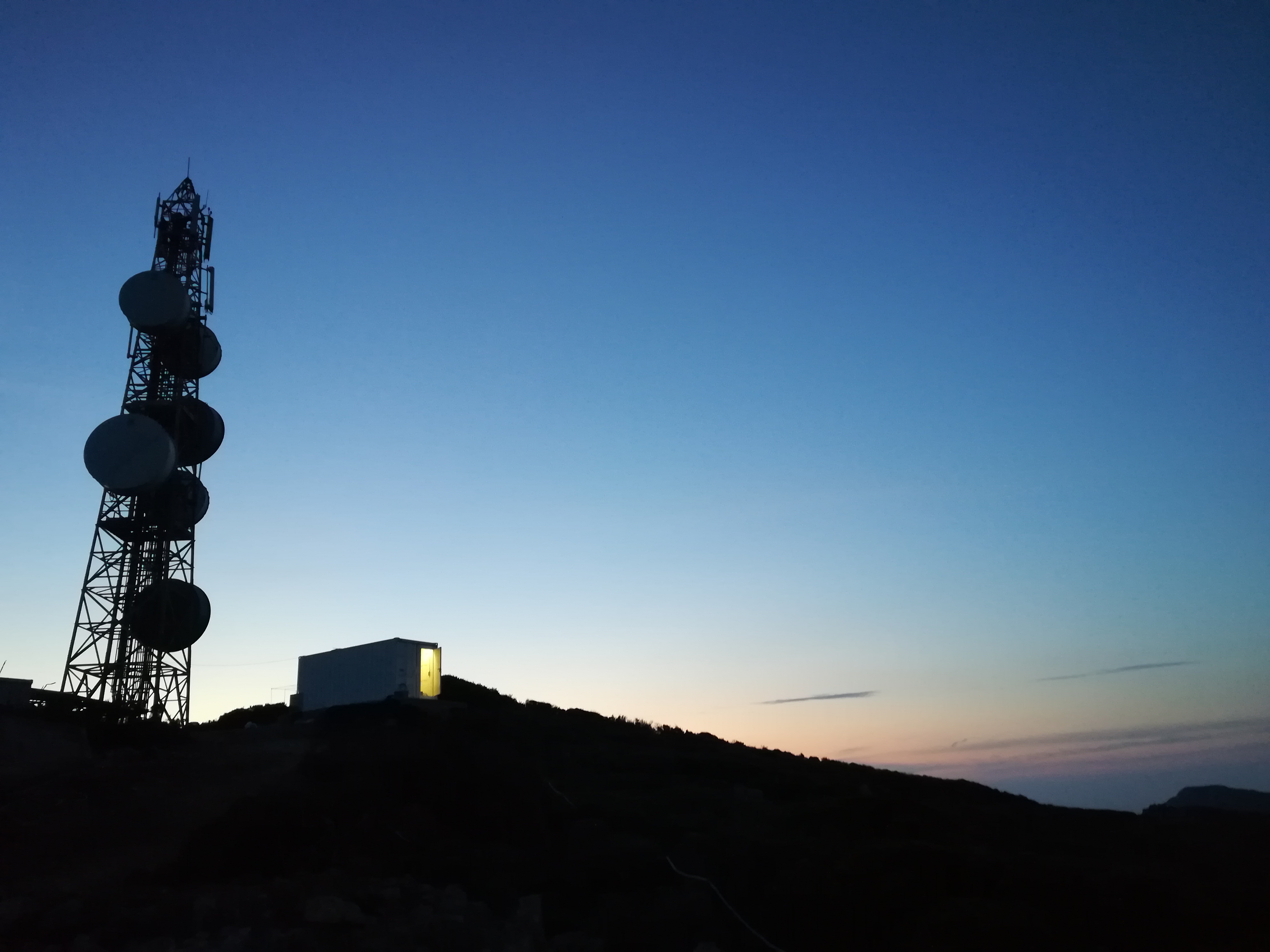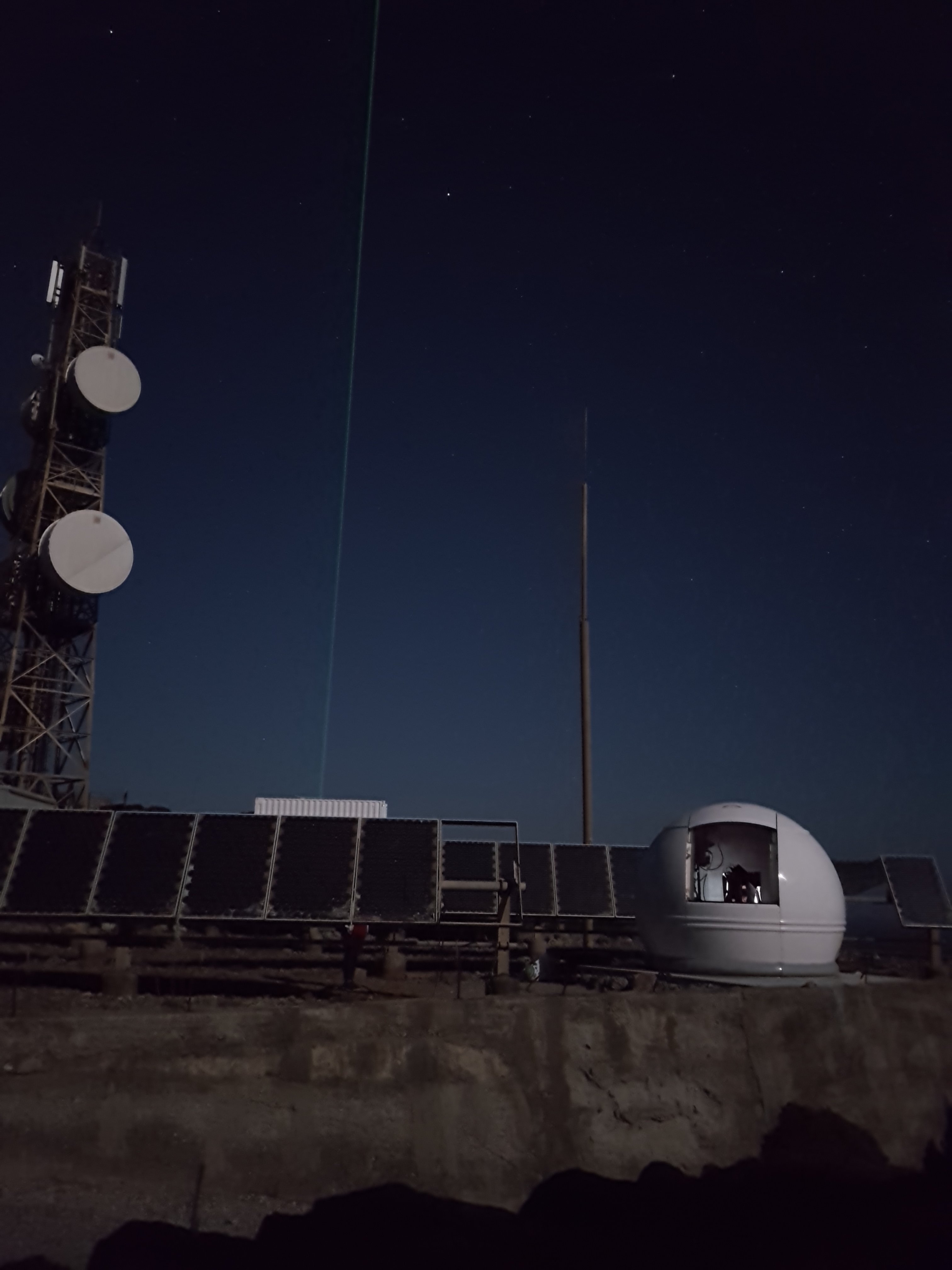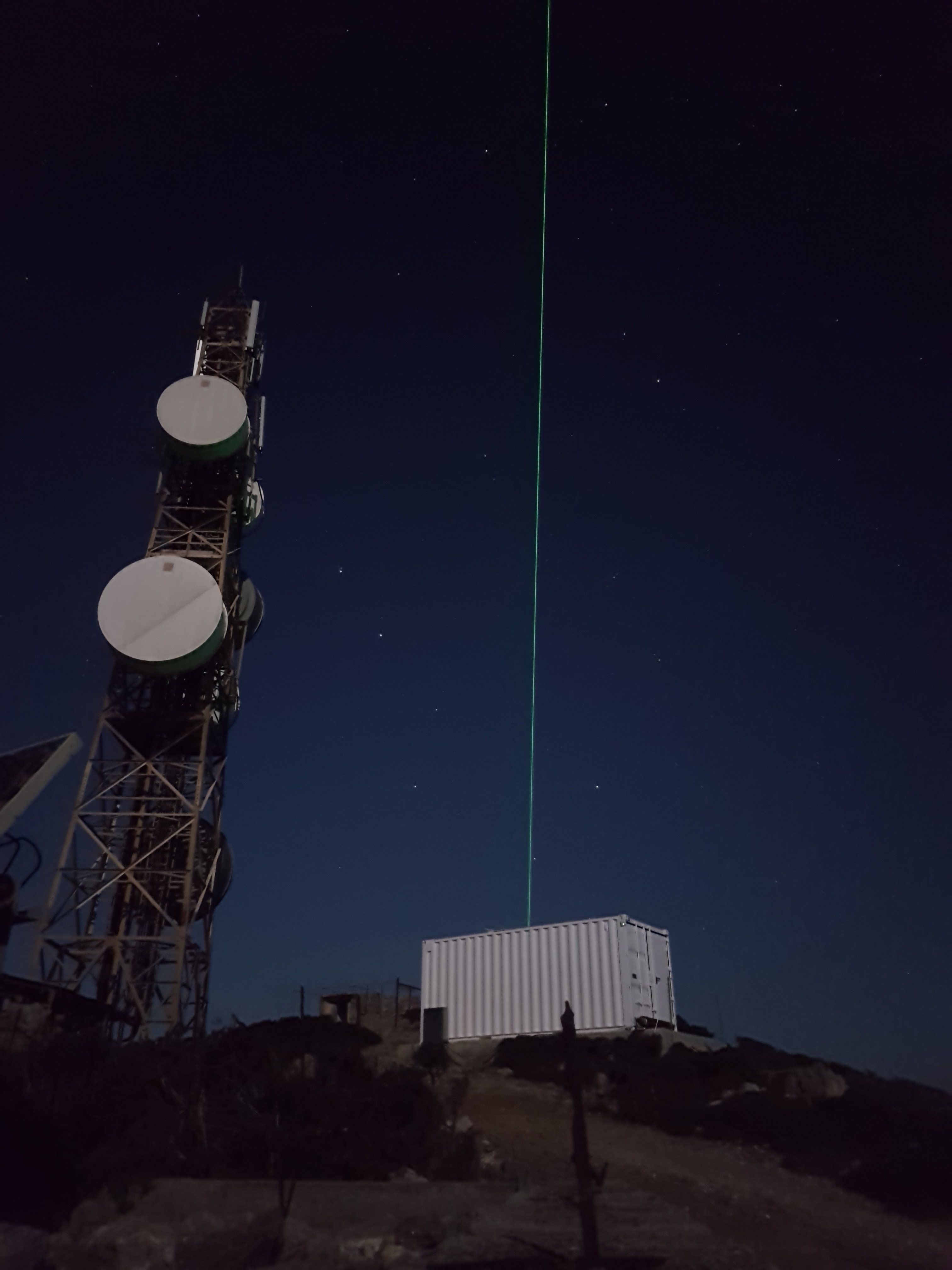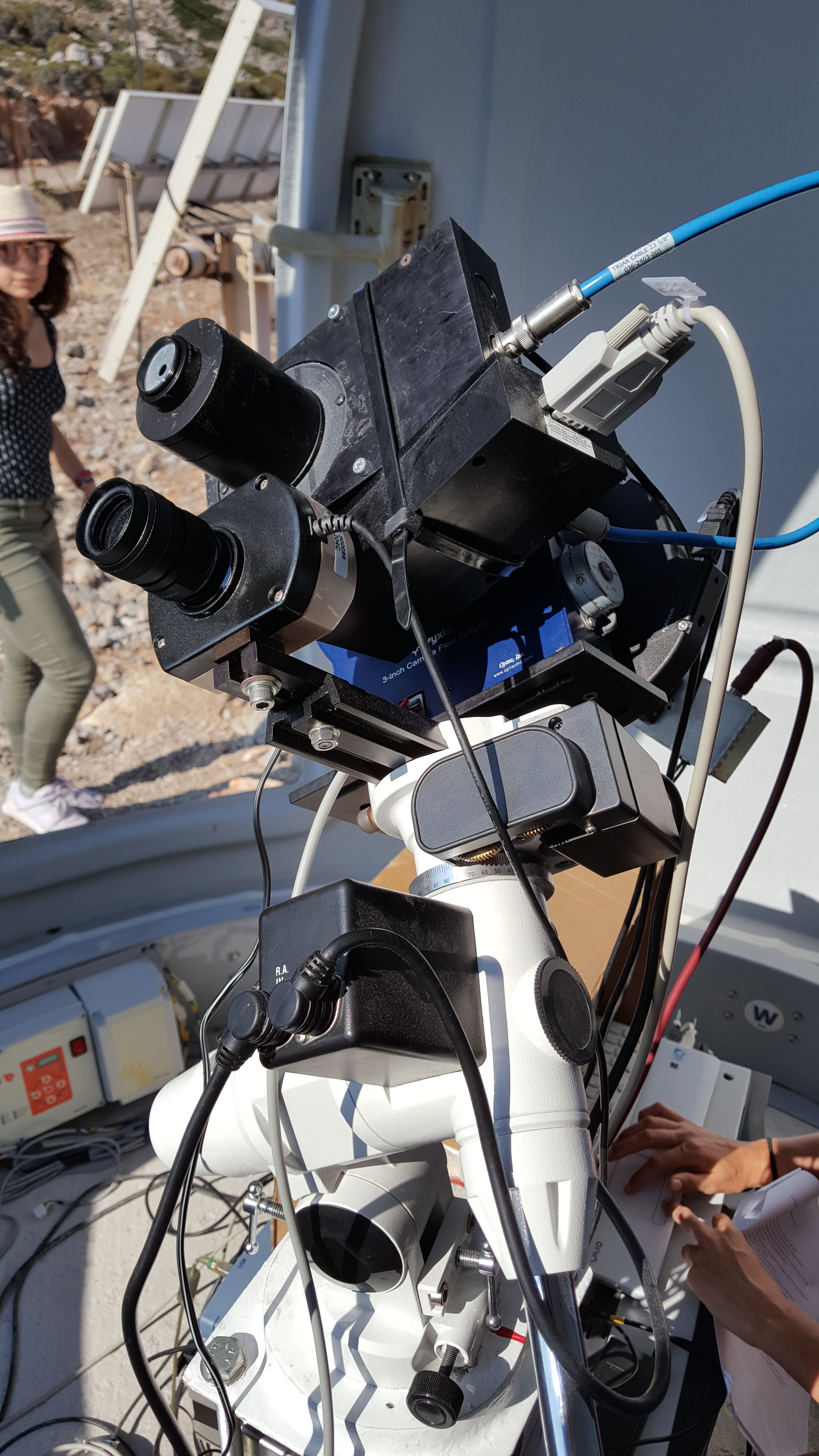SCOPE
The overarching goal of the proposed project is to answer the question: “Why dust particles travel longer than expected?” by understanding the role of triboelectric charging and quantify its impact on the evolution of the dust properties during transport. The following objectives are specifically identified:
- To empirically quantify the physical mechanism responsible for dust triboelectrification.
- To assess the impact of the triboelectric charging on atmospheric dust transport, by acknowledging the effects of electric field and particle orientation on dust removal processes and related parameterizations.
- To quantify the climatic impacts of the mechanism, particularly the effect on the dust size evolution during transport and consequently on dry deposition and CCN/IN reservoirs, as well as the effect of the electric field on particle orientation and consequently on radiative transfer (“Venetian blind effect”).
WORK PACKAGES
WP1 - Development of a lidar system to detect particle orientation
The goal of WP1 is to develop WALL-E, a novel lidar system capable of providing appropriate information for retrieving of dust orientation and microphysical properties. WALL-E will emit linear and circular polarized light and detect the linear and circular depolarization ratios, as well as other states of polarization in various polarization planes following the high quality EARLINET standards. Moreover, it will also employ scanning capabilities so as to provide more information on the dust orientation and microphysical properties, depending also on the angle of the particle orientation.
WP2 - Implementation of the large-scale experiment in Antikythera
The aim of WP2 is to set up and operate the observational systems for studying the long-range transport of dust as well as dust/radiation interactions. All instruments will be setup at the station of PANGEA in the island of Antikythera in Greece along with the existing PollyXT lidar which is upgraded with day-time Raman capabilities for continuous day and night dust observations. The observational effort will include the continuous operation of the ground-based instruments at the station for a 3 year period, along with 9 month intensive operation periods. The resulting dataset will form the basis for extracting novel inversion retrievals of the aligned dust properties in WP3 and for the optimization of the theoretical parameterizations in WP4.
WP3 - Development and validation of an algorithm for the retrieval of oriented dust properties
The aim of WP3 is to retrieve dust optical and microphysical properties as well as orientation information from the advanced remote sensing instruments. Special effort will be given in generating a novel scattering database of aligned non-spherical dust particles which will be necessary for the forward calculations of the retrieval. More specifically, the lidar data will be combined with the spectropolarimeter and the sunphotometer measurements to retrieve vertical profiles of dust particle orientation, size distribution and absorption. Specifically, we will combine (a) the linear and circular polarization products from WALL-E (b) elastic and Raman observations from PollyXT lidar (c) the multi-angle, Near-IR and IR polarized measurements from the spectropolarimeter and (d) Near-IR AOD measurements from the CIMEL sunphotometer. The wealth of information from the aforementioned measurements is considered adequate to retrieve the variation of the dust properties with altitude in the dust layers. Our approach aims to a more realistic retrieval than previous efforts assuming random orientation, by first taking into account the actual particle orientation and second including the Near-IR and IR passive remote sensing measurements that are more sensitive to larger dust particles.
WP4 - Develop a mathematical formulation to describe the triboelectric effects
In WP4 we will develop a physically based parameterization of dust gravitational settling, including, on top of current approximations on particle terminal velocities (a) the effect of triboelectric forces, (b) the oriented particle aerodynamics and (c) the thermodynamic stratification of the dust layer. The new algorithm will first be evaluated as a standalone scheme by comparisons of dust concentration profiles and dry deposition simulations against remote sensing and in-situ measurements. Then, the new scheme will be implemented in integrated atmospheric models for the simulation of complex dust patterns. A number of parameters that could play important role in determining the terminal velocities of the particles include: (a) the electric field and corresponding forces, (b) the particle orientation due to the electric field and the associated change in their aerodynamic properties, (c) the shape-induced aerodynamics and (d) the stability condition of the dust layer related to radiation absorption. All additional forces will be included in the momentum equation of the particles for the computation of the updated terminal velocities. The remote sensing profiles of deposited and airborne dust obtained in WP2 and WP3 will be used to evaluate and fine-tune the new dust settling parameterization. By improving the description of removal processes in the model and consequently the modelled size distribution, we expect to obtain more accurate simulations of optical dust thickness and dust stratification in the atmosphere and thus quantify the effects of dust on weather and climate processes.
WP5 - Quantification of the impact of triboelectrification on climate processes based on the observations
In WP5 we aim to consolidate the outcomes of the previous WPs in order to quantify the climatic consequences of dust, namely the impact on dry deposition, dust-related CCN/IN reservoirs and the effect of particle orientation on radiative transfer (“Venetian blind effect”). Model simulations including the new deposition scheme will provide climatology of dust deposition over the greater Mediterranean region. Since dust depositions are the major nutrient providers for phytoplankton in Mediterranean, this information will be valuable for consecutive biological studies. The contribution of dust particles to CCN/IN reservoirs will be assessed by the pure-dust CALIPSO-LIVAS product which is based on polarization lidar techniques for distinguishing dust from other aerosol types and compute the CCN and IN particle concentration profiles. This dataset will be readily available for input in climate models. Particle alignment can have an important effect on radiation (Venetian blind effect), since it will modify the apparent particle cross-section in the direction of radiation, altering the magnitude of aerosol extinction. The effect on radiation is evident on the alteration of the aerosol optical depth. Model estimates will be combined with the detailed scattering database of WP3 to extract realistic AOD difference for aligned and randomly oriented particles, for different solar zenith angles. Ignoring this effect can introduce biases in the predictions of aerosol radiative forcing in weather and climate models, affect satellite and ground-based remote sensing retrievals, and may explain discrepancies in AOD retrievals from different satellite and ground-based platforms.
EQUIPMENT/ INFRASTRUCTURE
The PANhellenic GEophysical observatory of Antikythera – PANGEA (35.86 N, 23.29 E, 110m a.s.l.) is a natural laboratory that facilitates the scientific needs of the ERC Consolidator Grant D-TECT.
The following equipment has been installed and is operational at the station
Polly-XT lidar
Polly-XT lidar: Multi-wavelength lidar for the 24/7 monitoring of the atmospheric state. The system enables the determination of the particle backscatter coefficient at 355, 532, and 1064 nm and of the extinction coefficient at 355 and 532 nm, allowing aerosol classification and microphysical characterization to derive the particle size distribution and concentration. In addition, the system operates two polarization-sensitive channels at 355 and 532 nm, to determine the aerosol particle shape from the (particle) linear depolarization ratio, to separate dust and non-dust particles in mixed aerosol layers, and to investigate mixed-phase clouds.
Field Mill Electrometer (JCI 131 FM)
A compact and robust instrument for continuous long term measurements of the ambient electric field, adverse environmental conditions. It is particularly suitable for continuous monitoring of atmospheric electric field conditions, associated with varying weather conditions and electric content, such as during thunderstorms or extreme volcanic activity. The output signal is proportionate to the electric field strength and currently operates at a range of 2kV/m with a precision better than 1%. The instrument is mounted on a 3m mast in order to avoid ground distortions. The FM is ideal for remote site installation due to its low power consumption and straightforward data collection system.
UV Multi-Filter Rotating Shadowband Radiometer (UV-MFR 7
Ultraviolet (UV) Multi-Filter Rotating Shadowband Radiometer (Model UVMFR-7), an instrument that measures global, diffuse, and direct UV solar irradiance at the same time. The recording channels are centered around seven wavelengths (300, 305, 311, 317, 325, 332 and 368 nm) with Nominal Full Width Half Maximum at 2 nm. Measurements are performed every 10 seconds and averaged values are stored every 1 minute. It is designed to operate automatically and autonomously in remote locations with only periodic manual cleaning of the fore optic
GRAW Radiosonde launch station (DFM-90, GS-E)
Specialized launching site for the deployment of meteorological GRAW radiosondes with attaching capabilities of newly developed atmospheric electricity sensors. The used radiosondes are of the DFM-09 type, are extremely light, small and robust, and provide reliable measurements of core atmospheric parameters with a columnar distribution. Effective telemetry and optimum reception guaranteed by the GS-E groundstation, make it the ideal set-up for on demand launches.
CIMEL sunphotometer
CIMEL is a high-precision multiband, automatic sun-and-sky scanning radiometer that provides measurements of the optical properties of the atmosphere by measuring the sun and sky radiance. Due to its very low power consumption and its self-powered system, it meets the requirements of continuous monitoring in terms of reliability, long term and very low maintenance cost
Direct-sun Solar Polarimeter (SolPol)
A prototype solar polarimeter, kindly conferred by the University of Hertfordshire, is designed to operate with direct sun tracking capabilities and measures the degree of linearly and/or circularly polarized sunlight due to forward scattering from atmospheric aerosols. Measurements are centered on 550nm, due to light detector current limitations, while the instrument’s precision and accuracy are of order of the 1ppm and 1%, respectively. SolPol is a robust instrument capable of manual operation per demand, especially under heavy Saharan dust loads and with low maintenance requirements. It is hosted within a medium sized astronomical dome for the optimum protection-to-applicability relation.
OUR TEAM

Vassilis Amiridis (VA) was born in Göteborg, Sweden, in 1971. He received his B.Sc. in Physics, M.Sc. in Environmental Sciences and Ph.D. in Atmospheric Physics at the Aristotle University of Thessaloniki, Greece in 1998, 2000 and 2006, respectively. Since 2006, VA is a Researcher of the Institute for Astronomy, Astrophysics, Space Applications and Remote Sensing (IAASARS) of the National Observatory of Athens (NOA) in Greece
Director of research
Vassilis Amiridis (VA) was born in Göteborg, Sweden, in 1971. He received his B.Sc. in Physics, M.Sc. in Environmental Sciences and Ph.D. in Atmospheric Physics at the Aristotle University of Thessaloniki, Greece in 1998, 2000 and 2006, respectively. Since 2006, VA is a Researcher of the Institute for Astronomy, Astrophysics, Space Applications and Remote Sensing (IAASARS) of the National Observatory of Athens (NOA) in Greece. He is working on climate research and he focuses on the impact of atmospheric aerosols and clouds on radiation and extreme weather. His research is mainly based on advanced ground-based and space-borne remote sensing observations (passive and active remote sensing techniques) and theoretical models.
VA has participated in 32 research projects and experimental campaigns, in 6 of which as coordinator and 4 as principal investigator for IAASARS/NOA. He has more than 80 publications in peer-reviewed scientific journals and his work received more than 1900 citations from third-party (h-index = 28, source: ISI Web of Knowledge). Moreover, VA participated in numerous conferences, co-chaired 8 of them and invited to present his work 7 times. VA is leading the ReACT Atmospheric Remote Sensing group in IAASARS/NOA. He is a member of the editorial board of EGU’s Atmospheric Measurement Techniques Journal (Copernicus Publications, Impact Factor = 3.2) and he is active reviewer in ~25 scientific Journals in his field.
VA is responsible for the operation and data exploitation of the 24/7 PollyXT sophisticated lidar system, member of the European Aerosol Research Lidar Network (EARLINET). He is also the PI of the Aerosol Remote Sensing Station (ARSS) of IAASARS/NOA in Athens (NASA’s AERONET site) and he is in charge of the operations for the cal/val program of ESA for ADM-Aeolus and EarthCARE in Greece, employing the official ESA ground-based mobile lidar system which is under development by IAASARS/NOA. His lidar-related activities have been acknowledged by the European Aerosol Research Lidar Network (EARLINET), which has elected VA as a council member for the periods 2012-2016 and 2016-2020. Moreover, VA acted as the Greek National Delegate for the GMES/COPERNICUS Committee for the period 2014-2017 and National Representative in Interim ACTRIS council, as well as member of the General Assembly of the Hellenic Foundation for Research & Innovation (ELIDEK). In 2016, VA received the ERC Consolidator Grant for establishing high level atmospheric research in the geophysical observatory of Antikythera, a unique infrastructure that is developed to study desert dust dynamics, transport and interaction with radiation.

Antonis Gkikas graduated in 2004 from the Natural Resources and Environmental Engineering Department of the Technological Education Institute of Crete (branch of Chania, Greece). In 2007, he received his MSc degree in Meteorology, Climatology and Atmospheric Physics. His PhD thesis (2012) dealt with the study of aerosol episodes in the Mediterranean basin
Post-Doc Researcher
Antonis Gkikas graduated in 2004 from the Natural Resources and Environmental Engineering Department of the Technological Education Institute of Crete (branch of Chania, Greece). In 2007, he received his MSc degree in Meteorology, Climatology and Atmospheric Physics. His PhD thesis (2012) dealt with the study of aerosol episodes in the Mediterranean basin (PhD thesis: Study of aerosol episodes over the broader area of the Mediterranean basin based on contemporary satellite data).
Both MSc and PhD studies have been accomplished in the Laboratory of Meteorology of the Physics Department at the University of Ioannina (Greece). His main scientific interests lie in the field of aerosol science, and more specifically on aerosol optical/physical properties based on satellite and ground observations, on the assessment of dust radiative effects and their associated impacts on atmospheric processes and on the assimilation of dust observations in atmospheric-dust models. During his research career, he has participated in 11 research projects and he has been co-author in 21 publications in peer-reviewed scientific journals (Citations: 320, h-index=10, source: ISI Web of Knowledge) and 67 scientific conference proceedings. In 2014, he awarded with an individual Marie-Curie FP7-PEOPLE-IEF scholarship (MDRAF project) and worked as a postdoctoral researcher, for two years (2014-2016), in the Earth Sciences Department of the Barcelona Supercomputing Center (BSC, Spain). During the period 2017-2019, he worked as a postdoctoral fellow (DUST-GLASS project) at the Institute for Astronomy, Astrophysics, Space Applications and Remote Sensing of National Observatory of Athens (IAASARS-NOA) in the framework of a Marie Skłodowska-Curie Individual Fellowship (H2020-MSCA-IF-2016). In 2019, he joined the research team of the ERC project D-TECT.
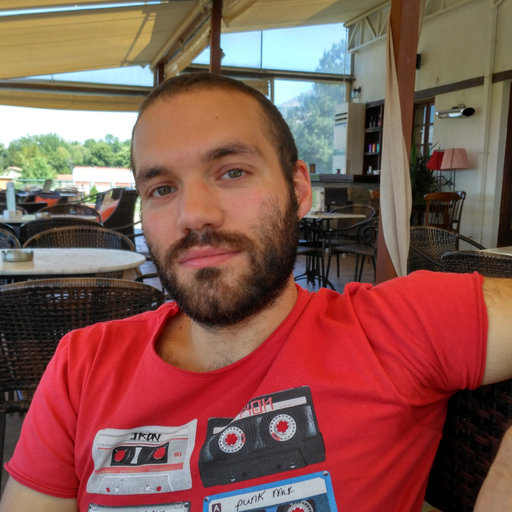
Nikolaos Siomos currently works at the Department of Physics, Aristotle University of Thessaloniki. Nikolaos does research in Atmospheric Optics and Aerosol monitoring with Remote Sensing Techniques, specializing in lidar and sunphotometer measurements. Their most recent publication is 'Comparison of two automated aerosol typing methods and their application on an EARLINET station’.
Post-Doc Researcher
Nikolaos Siomos currently works at the Department of Physics, Aristotle University of Thessaloniki. Nikolaos does research in Atmospheric Optics and Aerosol monitoring with Remote Sensing Techniques, specializing in lidar and sunphotometer measurements. Their most recent publication is 'Comparison of two automated aerosol typing methods and their application on an EARLINET station’.

Drakaki Eleni was born on 1985 in Athens. She received her B.Sc. in Physics and her M.Sc. in Environmental Physics/Meteorology from the University of Athens in 2009 and 2012 respectively.tory of Athens (NOA).
Phd Candidate
Drakaki Eleni was born on 1985 in Athens. She received her B.Sc. in Physics and her M.Sc. in Environmental Physics/Meteorology from the University of Athens in 2009 and 2012 respectively. During 2015-2017 she worked as research associate at the Atmospheric Modeling and Weather Forecasting Group at the University of Athens. Currently ,she is a PhD candidate at the Harokopio University and she is working together with the Insitute for Astronomy, Astrophysics, Space Applications & Remote Sensing in the framework of her thesis, aiming to study the desert dust transport processes in the atmosphere and their implications on clouds using multiscale modeling tools.

Tsikoudi Ioanna was born in 1994 in Athens, Greece. She graduated from the Physics Department of National and Kapodistrian University of Athens and she obtained her MSc degree in 2019, in the field of “Environmental Physics”, from the same Department.
Phd Candidate
Tsikoudi Ioanna was born in 1994 in Athens, Greece. She graduated from the Physics Department of National and Kapodistrian University of Athens and she obtained her MSc degree in 2019, in the field of “Environmental Physics”, from the same Department. The subject of her master thesis was “Dynamical analysis of a Mediterranean Tropical – Like Cyclone”. Since September 2019, she is working at the National Observatory of Athens, Institute for Astronomy, Astrophysics, Space Applications and Remote Sensing.

Papatheochari Stavroula studied Environmental Science at the Aegean University of Mytilene island, where she graduated in 2004. She acquired her Master's degree (MSc) on Waste Management, in 2011 from the Hellenic Open University. Professionally, she is active in national, EU and international funded projects' management and implementation from 2007.
Environmentalist/Management Support
Papatheochari Stavroula studied Environmental Science at the Aegean University of Mytilene island, where she graduated in 2004. She acquired her Master's degree (MSc) on Waste Management, in 2011 from the Hellenic Open University. Professionally, she is active in national, EU and international funded projects' management and implementation from 2007. Additionally, she is a certified adult trainer from the National Organisation for the Certification of Qualifications & Vocational Guidance. Since March 2015, she is an assistant project manager at the Institute for Astronomy, Astrophysics, Space Applications and Remote Sensing of the National Observatory of Athens.

Eleni Marinou graduated from the Applied Physics at the Applied Sciences Department of the National Technical University of Athens in 2010. She received her M.Sc. in the field of “Environmental Physics” from the Physics Department of the Kapodistrian University of Athens (2013). She acquired her PhD diploma on the study of the vertical distribution of desert dust and condensation nuclei over the Mediterranean from the Aristotle University of Thessaloniki (2017).
Post-Doc Researcher
Eleni Marinou graduated from the Applied Physics at the Applied Sciences Department of the National Technical University of Athens in 2010. She received her M.Sc. in the field of “Environmental Physics” from the Physics Department of the Kapodistrian University of Athens (2013). She acquired her PhD diploma on the study of the vertical distribution of desert dust and condensation nuclei over the Mediterranean from the Aristotle University of Thessaloniki (2017). She has been contacting research at the IAASARS Institute of the National Observatory of Athens since 2010, focusing on the retrieval of atmospheric parameters using passive and active remote sensing techniques. Her main interest is on atmospheric aerosol and cloud properties and interactions. She has been working mostly on research related to the properties of mineral dust, its climatic role and its impact on cloud formation, retrieving properties of aerosols (from active and passive remote sensing methods) and validation of space-borne atmospheric products using ground-based lidar and sun-photometric techniques. As a researcher she has participated in 6 international projects and 6 experimental campaigns related to atmospheric physics. She has 18 publications in peer review journals (h-index=7 source: Web of Science) and more than 50 presentations in environmental scientific conferences.

Emmanouil Proestakis graduated from the Department of Applied Physics at the Sciences of the National Technical University of Athens (NTUA) - Greece (2011). He received his MSc in the field of “Environmental Physics” from the Institute of Environmental Physics (IUP) of the University of Bremen – Germany (2013). In early 2018 he acquired his PhD diploma on the field of atmospheric remote sensing from space for depicting the aerosol connection with atmospheric electricity from the University of Patras (UoP) – Greece.
Post-Doc Researcher
Emmanouil Proestakis graduated from the Department of Applied Physics at the Sciences of the National Technical University of Athens (NTUA) - Greece (2011). He received his MSc in the field of “Environmental Physics” from the Institute of Environmental Physics (IUP) of the University of Bremen – Germany (2013). In early 2018 he acquired his PhD diploma on the field of atmospheric remote sensing from space for depicting the aerosol connection with atmospheric electricity from the University of Patras (UoP) – Greece. Since then Emmanouil Proestakis has been contacting research at the Institute for Astronomy, Astrophysics, Space Applications and Remote Sensing (IAASARS) Institute of the National Observatory of Athens, focusing on the retrieval of atmospheric parameters using passive and active remote sensing techniques. His main interest is on atmospheric aerosol properties and the interactions with clouds. He has been working mostly on research related to the properties of mineral dust, from synergies of active and passive remote sensing synergies and methods and on the validation of space-borne instrumentation against state-of-the-art ground-based observations. As a researcher he has participated in 4 international projects and 2 experimental campaigns related to atmospheric physics. He has 15 publications in peer review journals (h-index=7 source: Web of Science).

Born in Athens, Greece, in 1983. Holds a Diploma of Physics (University of Athens, 2009), a M.Sc. degree in Environmental Physics (20011) and a Doctorate in Physics (2018) in the Physics dept. of the same university. His Ph.D. Thesis was in the field of Solar Measurements for aerosol and trace gases research titled “Aerosol, Trace Gases and Water Vapour optical properties study, using spectral measurements of solar irradiance”
Post-Doc Researcher
Ioannis Panagiotis Raptis born in Athens, Greece, in 1983. Holds a Diploma of Physics (University of Athens, 2009), a M.Sc. degree in Environmental Physics (20011) and a Doctorate in Physics (2018) in the Physics dept. of the same university. His Ph.D. Thesis was in the field of Solar Measurements for aerosol and trace gases research titled “Aerosol, Trace Gases and Water Vapour optical properties study, using spectral measurements of solar irradiance”. He has worked at Atmospheric Physics group of University of Athens, at APCG at National Observatory of Athens and at Physicalisch Meteorologisches Observatorium Davos, World Radiation Center at Davos, Switzerland. He is an expert on solar spectral measurements and developing tools and algorithms to retrieve atmospheric physical properties of aerosols and gases. He specializes in the installation, maintenance and operation of measuring equipment and the quality assurance procedures of the data. He has 12 accepted publications in peer reviewed scientific journals and 96 citations (25/03/2019, source google scholar) and 16 publications in conference proceedings

Kampouri Anna was born in 1986 in Thessaloniki, Greece. She graduated from the Physics Department of Aristotle University of Thessaloniki and completed her M.Sc. degree in 2018, in the field of "Meteorology, Climatology and Atmospheric Environment”, from the Department of Geology in Aristotle University of Thessaloniki
Phd Candidate
Kampouri Anna was born in 1986 in Thessaloniki, Greece. She graduated from the Physics Department of Aristotle University of Thessaloniki and completed her M.Sc. degree in 2018, in the field of "Meteorology, Climatology and Atmospheric Environment”, from the Department of Geology in Aristotle University of Thessaloniki. Since February 2019, she has been working as a research fellow for the Institute for Astronomy, Astrophysics, Space Applications, and Remote Sensing, on atmospheric modeling. Currently, she is a PhD candidate in the Aristotle University of Thessaloniki with the main focus on aerosol sources and emissions based on dispersion modeling and remote sensing
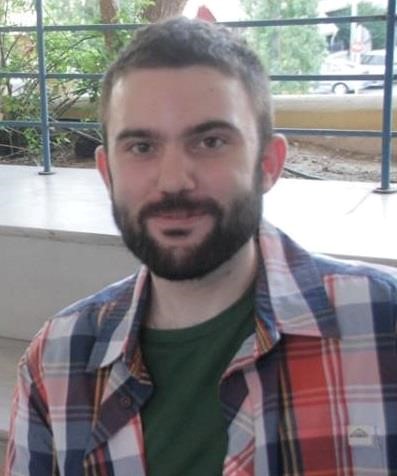
Angelos Nersesian obtained his degree in Physics from the University of Patras in 2012. He completed his MSc degree in Astrophysics and Space Physics, at the University of Crete, in 2015. The subject of his master thesis was the study of optical spectra variability of the Be/X-ray binary systems. As of September 2016, he is working as a PhD student at IAASARS, as part of the DustPedia project.9.
Phd Candidate
Angelos Nersesian obtained his degree in Physics from the University of Patras in 2012. He completed his MSc degree in Astrophysics and Space Physics, at the University of Crete, in 2015. The subject of his master thesis was the study of optical spectra variability of the Be/X-ray binary systems. As of September 2016, he is working as a PhD student at IAASARS, as part of the DustPedia project.
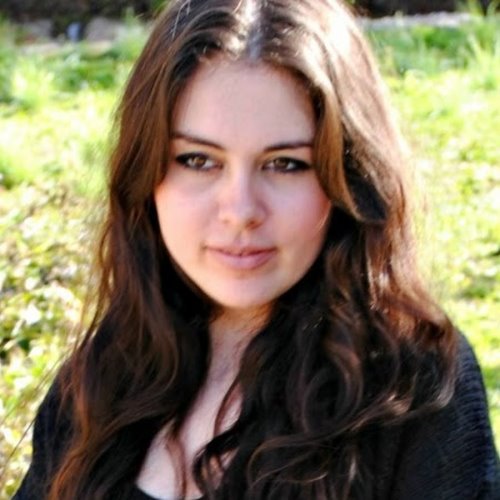
Ioanna Mavropoulou was born in 1982 in Thessaloniki, Greece. She studied at the School of Applied Mathematics and Physical Sciences, Department of Applied Physics, in National Technical University of Athens. She worked since 2008 as a manager in multinational retail companies.
Physicist/Management Support
Ioanna Mavropoulou was born in 1982 in Thessaloniki, Greece. She studied at the School of Applied Mathematics and Physical Sciences, Department of Applied Physics, in National Technical University of Athens. She worked since 2008 as a manager in multinational retail companies. Since May 2019 she works as a physicist and management support at the Institute for Astronomy, Astrophysics, Space Applications and Remote Sensing of the National Observatory of Athens
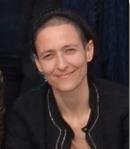
Alexandra Tsekeri (AT) was born in Ioannina, Greece, in 1981. She received her B.Sc. in Environmental Engineering from the Polytechnic School of the Democritus University of Thrace (DUTH), Greece, in 2005 and her Ph.D. in Earth and Environmental Sciences from the Graduate School and University Center, The City University of New York (CUNY), USA, in 2011.
Post-Doc Researcher
Alexandra Tsekeri (AT) was born in Ioannina, Greece, in 1981. She received her B.Sc. in Environmental Engineering from the Polytechnic School of the Democritus University of Thrace (DUTH), Greece, in 2005 and her Ph.D. in Earth and Environmental Sciences from the Graduate School and University Center, The City University of New York (CUNY), USA, in 2011. Since 2012 she is a Postdoctoral Researcher at the Institute for Astronomy, Astrophysics, Space Applications and Remote Sensing (IAASARS) of the National Observatory of Athens (NOA) in Greece, working in the group of Vassilis Amiridis.
Her research focuses on the characterization of the atmospheric particles mainly by means of remote sensing methods, employing novel inversion techniques.
Currently she is a WP manager in the ERC Consolidator Grant “DTECT” of Vassilis Amiridis. Her work in DTECT involves (a) the design of a novel polarization lidar instrument that will measure the dust alignment in the atmosphere, (b) the participation in the organization of multi-instrument largescale experiments (e.g. performing measurements with the new polarization lidar and passive polarimetry) in the geophysical observatory of Antikythera and (c) the development of a synergistic multi-instrument retrieval for the characterization of oriented dust properties. (http://www.researcherid.com/rid/L-5503-2013).
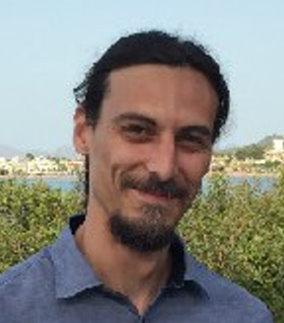
Sotirios Mallios received his B.Sc. in Physics with an orientation in Electronics, Computers, Telecommunications and Control from the Department of Physics of the National and Kapodistrian University of Athens (NKUA) in 2005. In 2015 he earned his Ph.D in Electrical Engineering from the Electrical Engineering Department of the Pennsylvania State University, USA.
Post-Doc Researcher
Sotirios Mallios received his B.Sc. in Physics with an orientation in Electronics, Computers, Telecommunications and Control from the Department of Physics of the National and Kapodistrian University of Athens (NKUA) in 2005. In 2015 he earned his Ph.D in Electrical Engineering from the Electrical Engineering Department of the Pennsylvania State University, USA.
He worked as a Research Assistant at the Microwave and Optics Application Group at Physics Department of the National and Kapodistrian University of Athens (2001-2010), and at the Atmospheric Electrodynamics Group at the Electrical Engineering Department of the Pennsylvania State University (2010-2015). In 2019 he joined the Institute for Astronomy, Astrophysics, Space Applications and Remote Sensing (IAASARS) of the National Observatory of Athens (NOA) to work as a Post-doc Researcher.

Gialitaki Anna was born in 1987 in Athens, Greece. She graduated from the Physics Department of National and Kapodistrian University of Athens and is currently a student at the postgraduate program of the same department entitled “Environmental Physics”.
PhD Candidate
Anna Gialitaki was born in 1987 in Athens, Greece. She graduated from the Physics Department of National and Kapodistrian University of Athens and is currently a student at the postgraduate program of the same department entitled “Environmental Physics”. Since August 2017 she is working together with the Institute for Astronomy, Astrophysics, Space Applications & Remote Sensing in the framework of her master thesis, aiming to study the physical and optical properties of aerosols using remote sensing and in-situ observations.
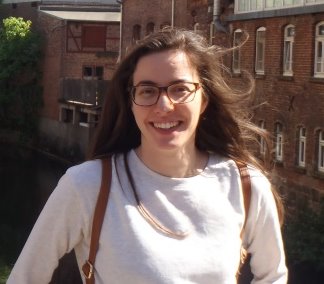
Peristera Paschou comes from Lefkopigi Kozani, Greece and she was born in 1994. She is a graduate of the Physics Department in Aristotle University of Thessaloniki and she obtained her M.Sc. degree in 2018, in the field of "Environmental Physics", also from the Physics Department in Aristotle University of Thessaloniki
PhD Candidate
Peristera Paschou comes from Lefkopigi Kozani, Greece and she was born in 1994. She is a graduate of the Physics Department in Aristotle University of Thessaloniki and she obtained her M.Sc. degree in 2018, in the field of "Environmental Physics", also from the Physics Department in Aristotle University of Thessaloniki. Since February 2019, she has been working as a research fellow for the Institute for Astronomy, Astrophysics, Space Applications and Remote Sensing at the National Observatory of Athens on active ground-based remote sensing. Currently, she is a PhD candidate in the Aristotle University of Thessaloniki with the main focus on the properties of desert dust using active satellite and ground-based remote sensing

Thanasis Georgiou is currently a student at the Electrical & Electronic Engineering faculty of the University of West Attica. In 2016, as a member of the TTSS team of the Electrical Engineering faculty he participated in the hackAIR project where he designed low-cost sensor nodes for measuring air quality.
IT Support
Thanasis Georgiou is currently a student at the Electrical & Electronic Engineering faculty of the University of West Attica. In 2016, as a member of the TTSS team of the Electrical Engineering faculty he participated in the hackAIR project where he designed low-cost sensor nodes for measuring air quality. Since April of 2018 he is working with the ReACT team of IAASARS in managing, storing and analysing research data, administrating computational resources and providing technical support for instrumentation.

Metallinos Spiros graduated from high school at Corfu in 1993 and began his studies at the Physics Department of the Aristotle University of Thessaloniki (AUTH). At the same department he worked at the Computer Laboratory and later was employed as technical support for the AUTH Central Library007.
Station Operator
Metallinos Spiros graduated from high school at Corfu in 1993 and began his studies at the Physics Department of the Aristotle University of Thessaloniki (AUTH). At the same department he worked at the Computer Laboratory and later was employed as technical support for the AUTH Central Library. He completed his military service as a reserve artillery officer. Since 2004 he has been working in the private sector as a computer and network technician. His responsibilities encompass: IT services for performance improvement of business computer systems, testing of hardware and software, network setup and support, as well as the development of customized solutions tailored to the needs of individuals, companies and organizations. Since September 2019 he is working together with the Institute of Astronomy, Astrophysics, Space Applications and Remote Sensing for the maintenance and support of the PANGEA-ReACT Station in Antikythera, Greece.
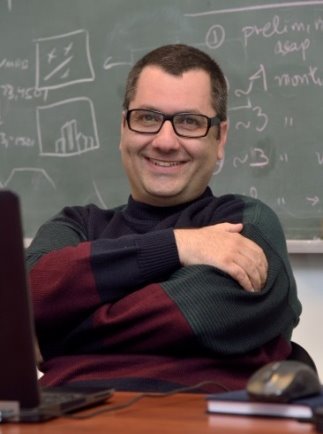
Stavros Solomos was born in Athens, Greece in 1976. He received his B.Sc. in Physics, M.Sc. in Environmental Physics / Meteorology and PhD in Meteorology / Atmospheric Modeling from the University of Athens, Greece in 2001, 2003 and 2011 respectively. Since 2013, he is a postdoctoral researcher at the Institute for Astronomy, Astrophysics, Space Applications and Remote Sensing (IAASARS) of the National Observatory of Athens.
Post-Doc Researcher
Stavros Solomos was born in Athens, Greece in 1976. He received his B.Sc. in Physics, M.Sc. in Environmental Physics / Meteorology and PhD in Meteorology / Atmospheric Modeling from the University of Athens, Greece in 2001, 2003 and 2011 respectively. Since 2013, he is a postdoctoral researcher at the Institute for Astronomy, Astrophysics, Space Applications and Remote Sensing (IAASARS) of the National Observatory of Athens. During 2006-2013 he worked as research associate at the Atmospheric Modeling and Weather Forecasting Group at the University of Athens. His fields of expertise include climate change and impacts on regional weather, severe atmospheric phenomena (e.g. hurricanes, floods, dust storms), direct and indirect aerosol effects in the atmosphere, air pollution, dispersion modeling, satellite data assimilation and renewable energy. A list of publications is found here: http://www.researcherid.com/rid/C-4889-2014

I have studied physics and environmental physics at the Aristotle University of Thessaloniki, Greece and atmospheric physics and climate modelling at the Max Planck Institute for Meteorology, Germany. I have worked as a post-doctoral research associate at the Department of Physics, Aristotle University of Thessaloniki, Greece, the department of Geosciences, Aarhus University, Denmark, the Atmospheric Oceanic and Planetary Physics lab, University of Oxford, UK and my latest assignment is at the National Observatory of Athens.
Post-Doc Researcher
Stergios Misios studied physics and environmental physics at the Aristotle University of Thessaloniki, Greece and atmospheric physics and climate modelling at the Max Planck Institute for Meteorology, Germany. I have worked as a post-doctoral research associate at the Department of Physics, Aristotle University of Thessaloniki, Greece, the department of Geosciences, Aarhus University, Denmark, the Atmospheric Oceanic and Planetary Physics lab, University of Oxford, UK and my latest assignment is at the National Observatory of Athens. My main field of interest is the role of external forcings to the climate system with the aid of different hierarchy of models: from toy-models to comprehensive chemistry earth system models. I have performed highly conceptualized simulations with ECHAM general circulation model, MESSy chemistry climate model and HadGEM Earth system model, which have been instrumental in helping to understand how large-scale flows respond to radiative forcing. At NOA, I am using a global climate model to study effects Saharan dust transport on regional and global scales.

Vasiliki Daskalopoulou was born in 1989 in Diavolitsi Messinia, Greece. She received her B.Sc. degree from the Department of Physics at the National and Kapodistrian University of Athens (NKUA) in 2015 and completed her M.Sc. degree in 2017, in the field of "Space Science, Technologies and Applications", granted from the University of Peloponnese and the National Observatory of Athens (NOA).
PhD Candidate
Vasiliki Daskalopoulou was born in 1989 in Diavolitsi Messinia, Greece. She received her B.Sc. degree from the Department of Physics at the National and Kapodistrian University of Athens (NKUA) in 2015 and completed her M.Sc. degree in 2017, in the field of "Space Science, Technologies and Applications", granted from the University of Peloponnese and the National Observatory of Athens (NOA).
Since August 2017, she has been working as a research fellow in the Institute for Astronomy, Astrophysics, Space Applications and Remote Sensing (IAASARS) of NOA and since November of the same year, undertakes her Ph.D studentship in the Department of Physics at the University of Crete, funded by the Greek State Scholarship Foundation.
Vasiliki focuses on desert dust electrification processes, in-field measurements of atmospheric electric parameters and the investigation of atmospheric particle orientation due to triboelectric effects.

Maria Tsichla was born in Athens in 1994. She graduated from the Physics Department of National and Kapodistrian University of Athens in 2017 and she obtained her MSc degree in the field of Astrophysics, Astronomy and Mechanics from the same Department in 2019.
PhD Candidate
Maria Tsichla was born in Athens in 1994. She graduated from the Physics Department of National and Kapodistrian University of Athens in 2017 and she obtained her MSc degree in the field of Astrophysics, Astronomy and Mechanics from the same Department in 2019. The subject of her master thesis was spectral analysis of time series aiming to identify new periodicities for space weather forecasting. Since September 2019, she is working at the National Observatory of Athens, Institute for Astronomy, Astrophysics, Space Applications and Remote Sensing in the context of her PhD

Alexiou Alexandros was born in 1996 in Athens, Greece. He is a graduate of the Experimental High School of Anavryta, and is currently studying in Athens' University of Economics and Business, in the Department of Informatics. He has worked in the organisation and completion of various projects in the past and has been oftentimes occupied in the field of IT.
IT Support
Alexiou Alexandros was born in 1996 in Athens, Greece. He is a graduate of the Experimental High School of Anavryta, and is currently studying in Athens' University of Economics and Business, in the Department of Informatics. He has worked in the organisation and completion of various projects in the past and has been oftentimes occupied in the field of IT. Since September 2019, he is working together with the Institute of Astronomy, Astrophysics, Space Applications and Remote Sensing in the framework of an internship, and is aiming towards being active in the field of Data Engineering in the future.

Giorgos Katsanevakis was born in Piraeus in 1976. He graduated from Technical and Vocational High School in 2000 with specialization on Electrical Engineering and he works since 2002 for the maintenance of mobile network antennas in different regions in Southern Greece
Station Operator/Station Support
Giorgos Katsanevakis was born in Piraeus in 1976. He graduated from Technical and Vocational High School in 2000 with specialization on Electrical Engineering and he works since 2002 for the maintenance of mobile network antennas in different regions in Southern Greece. Since September 2019 he is working together with the Institute of Astronomy, Astrophysics, Space Applications and Remote Sensing for the maintenance and support of the PANGEA-ReACT Station in Antikythera, Greece.
GET IN TOUCH
